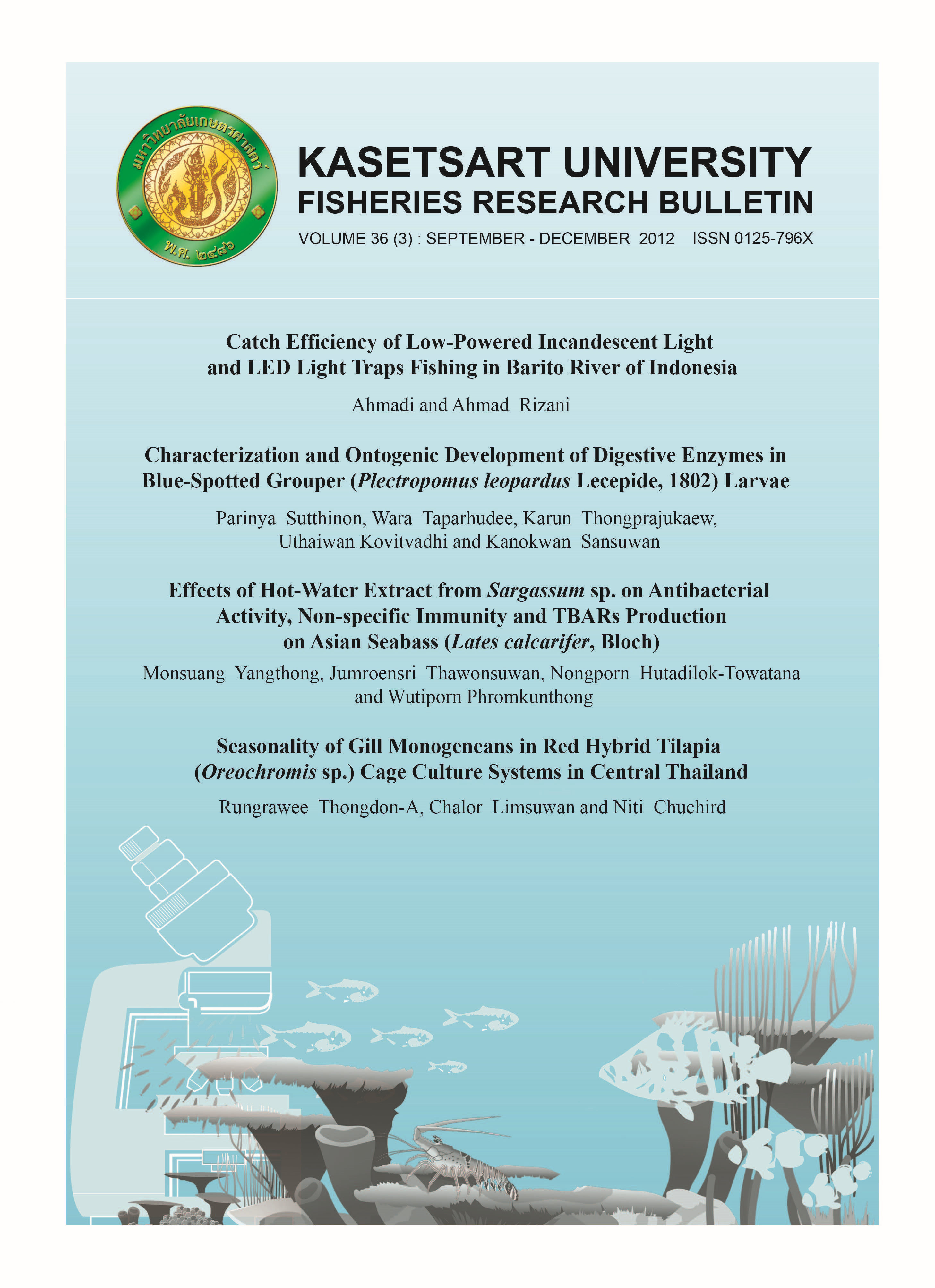Characterization and Ontogenic Development of Digestive Enzymes in Blue-Spotted Grouper (Plectropomus leopardus Lecepide, 1802) Larvae
Main Article Content
Abstract
This research aimed to provide the basic data for future understanding of feeding habit and nutrient metabolism in blue-spotted grouper (Plectropomus leopardus Lecepide, 1802) larvae based on digestive enzyme studies. The pH (2–12) and temperature (25–80°C) characteristics of total protease, amylase and lipase were determined before choosing the optimal conditions for the further study of the ontogenic development of enzymes. The total protease activities had an optimal pH of 2, 7 and 10 with the same optimal temperature at 50°C. Amylase and lipase exhibited the highest activity at pH 7 and 45°C. Specific activities of total proteases and amylase were positively correlated during experimentation (r = 0.825, P < 0.05). Lipase specific activity was found to be high in fertilized egg (2.20 ± 0.88 mU mg protein-1) and newly hatched larvae (2.55 ± 0.75 mU mg protein-1), and increased again during metamorphosis period (1.59 ± 0.25 mU mg protein-1). The findings from characteristic studies suggest that pH 7 is suitable for evaluating in vitro digestibility of protein, carbohydrate and lipid, whereas ontogenic studies support understanding of the feeding habit and nutrient metabolism of blue-spotted grouper larvae.

